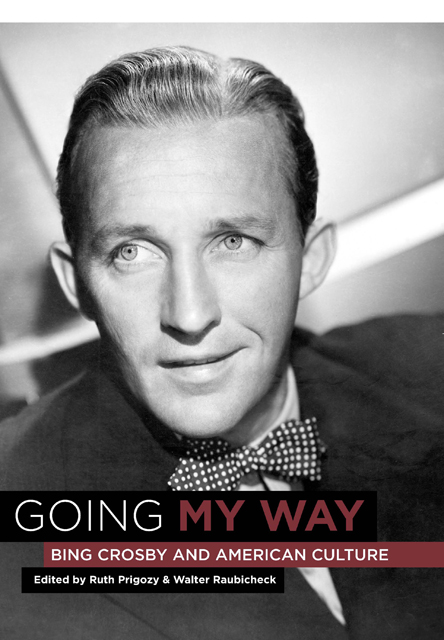Book contents
- Frontmatter
- Dedication
- Contents
- List of Illustrations
- Foreword
- Preface
- Acknowledgments
- Introduction Bing Crosby—Nothing Is What It Seems
- Part 1 Theoretical Perspectives on Crosby
- Part 2 Cultural Perspectives on Crosby
- Part 3 Historical Perspectives on Crosby
- Personal Comments
- Selected Bibliography
- List of Contributors
- Index
Conclusion - Bing Crosby—Architect of Twentieth-Century Style
Published online by Cambridge University Press: 11 March 2023
- Frontmatter
- Dedication
- Contents
- List of Illustrations
- Foreword
- Preface
- Acknowledgments
- Introduction Bing Crosby—Nothing Is What It Seems
- Part 1 Theoretical Perspectives on Crosby
- Part 2 Cultural Perspectives on Crosby
- Part 3 Historical Perspectives on Crosby
- Personal Comments
- Selected Bibliography
- List of Contributors
- Index
Summary
Whenevcr the late Nat King Cole announced that he was going to sing his hit “Nature Boy,” he had a standard introduction that he used at most every concert. He described it as a song that asked the big questions about life, such as “Why am I here? Where I am going? Where am I going to park?”
The future is a snap—it's the past that's impossible to explain. The crucial question that we’re all asking in the new millennium is not necessarily “where are we going?” but rather, “how did we get here?” So many notions on so many subjects were completely altered during the last century on every topic from transportation to the role of government to Civil Rights, so the question of how we made the transition from there to here is not an easy one.
In the more than one hundred years since the birth of Bing Crosby in 1903, it seems that the sphere of human activity that has changed the most is communication. It might have been possible, a hundred years ago, to foresee that the thingamabobs that were then regarded as inventor's toys and occasional follies— the telegraph, the telephone, the phonograph, and the kinetoscope (movie camera to you and me)—could affect the way information was disseminated.
Jules Verne, H. G. Wells, or some other nineteenth-century science fiction writer might have been able to predict that there would be such a thing as mass communication— one person speaking out to many—the same way that one might have predicted that by 1975 everyone would have one's own private autogyro. What no one could have anticipated was how the new technology would have such a profound effect on the content of the messages it was more than merely transmitting.
- Type
- Chapter
- Information
- Going My WayBing Crosby and American Culture, pp. 163 - 166Publisher: Boydell & BrewerPrint publication year: 2007

